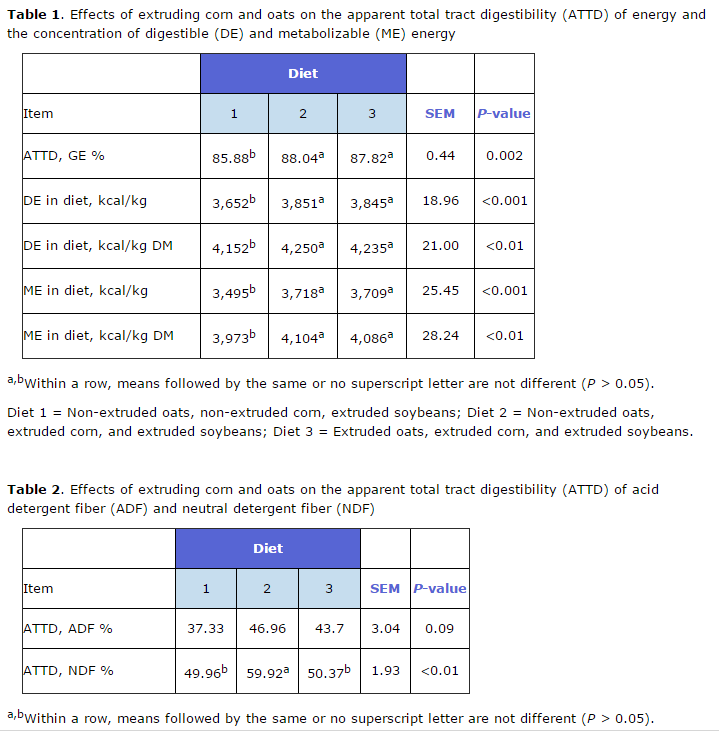



Effects of Extrusion of Corn and Oats on Digestibility of Energy, Crude Protein and Fibre in Diets Fed to Pigs
Extrusion of corn (maize) increased its digestibility and concentration of energy but the treatment did not affect these parameters when applied to oats, according to new research at the Hans H Stein Monogastric Nutrition Lab at the University of Illinois Urbana-Champaign.In extrusion, cereal grains are processed under conditions of heat and pressure. Like other types of heat treatment, extrusion may reduce the concentration of anti-nutritional factors. Extrusion also gelatinises starch, improving its digestibility. Improved digestibility of starch should, in turn, lead to an increase in digestible energy.
Extrusion has also been shown in some studies to solubilise the insoluble fraction of the fibre, which would also increase fibre digestibility and digestible energy.
Corn is a high starch ingredient, while oats are high in fibre. An experiment was conducted to determine the effects of extruding corn and oats on the apparent total tract digestibility (ATTD) of energy and fibre when fed to growing pigs.
Experimental Design
A total of 36 growing pigs with an average initial body weight of 21.62 kg were fed one of three diets. Each diet contained the same proportions of oats (15 per cent), corn (53 per cent) and soybeans (32 per cent). In Diet 1, both oats and corn were in non-extruded form. In Diet 2, corn was extruded and oats were not. In Diet 3, both oats and corn were extruded. The soybeans used in all three diets were extruded.
Urine and faecal samples were collected and analysed to determine the ATTD of gross energy; digestible energy; metabolisble energy; and ATTD of acid detergent fibre (ADF) and neutral detergent fibre (NDF).
Extrusion of Corn Increases Energy Digestibility
The ATTD of gross energy was greater (P=0.002) in Diets 2 (non-extruded oats and extruded corn) and 3 (extruded oats and extruded corn) than in Diet 1 (non-extruded oats and non-extruded corn) (Table 1). On both an as-fed and dry-matter basis, the concentrations of digestible and metabolisable energy were the same in Diets 2 and 3, and were greater (P<0.01) in Diets 2 and 3 than in Diet 1.
There was no difference among the experimental diets in the ATTD of ADF. The ATTD of NDF was greatest (P<0.01) in Diet 2 and did not differ between Diets 1 and 3.
Key Points
Extrusion of corn increased the ATTD of GE and the concentrations of DE and ME compared with diets containing non-extruded corn.
Extrusion of oats did not increase the ATTD of GE or fibre or the concentrations of DE and ME.
This report is based on unpublished research by Yanhong Liu, Oscar Rojas and Hans H. Stein.
December 2014








